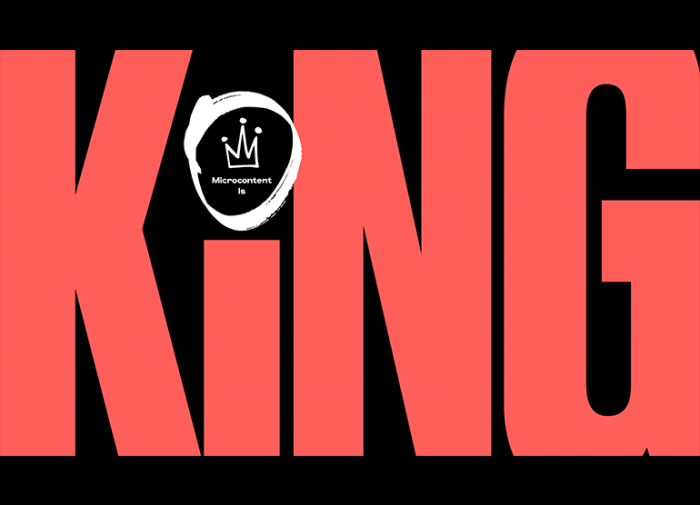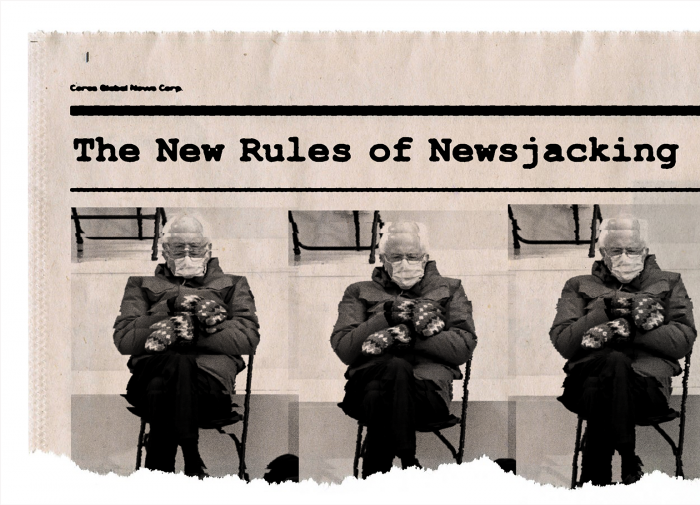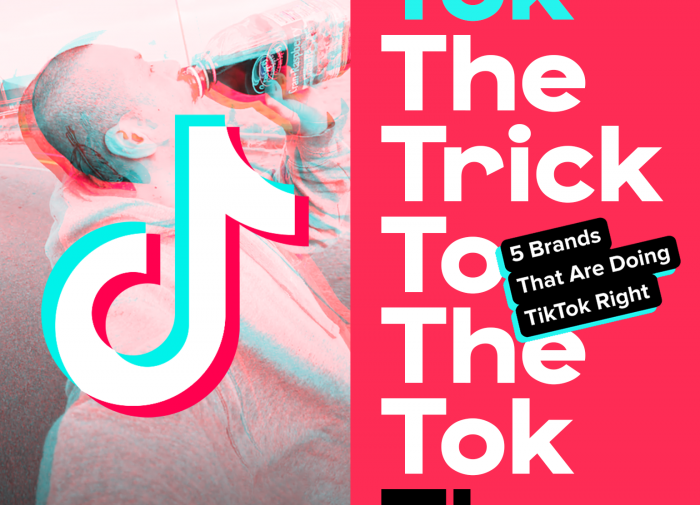In a past life, I was a journalist. Okay, I was an amateur one at my college newspaper, but I didn’t treat it like a side hustle.
A big chunk of my college years were spent in the newsroom, working mainly as a sports editor. While I cared about my classes, I definitely spent more time reporting, writing, and arguing with my friends in that room than I ever spent in the library. Journalism afforded me experiences I still cherish, like speaking with future pro athletes, chatting up legendary coaches, and traveling with teams for big road games.
And it’s how I learned how to interview. And in the marketing world (where I now work), the simple art of asking questions is fast becoming an essential skill, too—whether you’re writing a blog, hosting a podcast, leading a panel discussion, or just hiring a new teammate. If content is king, asking good questions is the road into the palace.
The interview might seem like a challenge—when you’re one-on-one in conversation, there’s nowhere to hide. Many podcasts and webinars are conducted live, putting added pressure on the interviewer. Understanding a few simple tactics can improve these conversations and get the insights you (and your audience) are looking for.
Listen Up
Be thoroughly prepared, research everything, and write out all of your questions before the interview starts. Then, barely refer to them, if you can—because if all goes well, you won’t need to.
Sticking exclusively to a list of pre-prepared questions will only scratch the surface and yield largely uninteresting (or well-known) answers. Refer to your prep strategically, perhaps to bring up an obscure fact about the individual; that knowledge could impress them, delight them, or make them feel important.
But listen carefully and know your stuff, because the most interesting information from the session will come from natural conversation. Listening—the ability to identify an interesting nugget in an answer and go off-script to explore it further with the right follow-up questions—is perhaps the single most important skill needed to be an interesting, effective interviewer. The best interviews are the ones where things just flow.
* These questions are as general as it gets, just to help you start thinking about listening and responding. Ideally, your follow-ups will be more specific, properly tailored to the subject.
Settle the Nerves—Yours and Theirs
Have your nerves been eating you up for hours before the interview starts? It’s totally possible, even probable, that the same thing is happening with your subject!
Just as you might be nervous to speak with an industry leader or a trendsetting professional, they might be nervous about saying the wrong thing or sounding boring. Before the interview starts, help your conversation partner warm up by building rapport with the camera or recorder turned off. Find common interests, chat about current events, learn about some of the pop culture they’ve been digging lately.
I once interviewed a freshman basketball player who’s since gone pro. As a newcomer to the NCAA, he hadn’t been interviewed much and wasn’t especially comfortable at the start of our session. So I held off asking any of my more nuanced questions and decided to switch the topic to something more comfortable. I asked him about pregame music.
His favorite? Adele.
I stared blankly back at him, eventually mustering up the only word I could: “Adele?”
He confirmed that I didn’t mishear him, and that his most-played song by the British pop icon was “Someone Like You.”
Of course, we had a big laugh about it. That moment of candor relaxed him, almost physically—he laughed at himself and didn’t get any grief for it. Later on, he seemed more comfortable sharing personal stories about his family and hometown, but his love for Adele became a focus of the feature.
Superlatives Are Your Best Friends
Heh, see what we did there?
Questions that ask for the best, worst, most, or least so-and-so in their lives generally lead to interesting answers. They challenge the interviewee to dig into their memory and find the things that stick out most, and they also help to expose what makes them tick.
What really bothers them? What makes them most happy? Superlatives force subjects to be specific while getting to the heart of what makes them human. And all good interviews—even ones about marketing—should reveal humanity.
Push for Specificity
Whether it’s written or spoken, great storytelling has a way of transporting audiences to the scene. What makes campfire stories so spooky? It’s not that you can remember the experience, because you weren’t there when it happened. It’s the details in the telling of the story—around that campfire, you’re transported to see the ominous shadow in the window, hear the creak of the old, rickety staircase, smell the dingy, dusty basement—all inside your own imagination.
Specific details bring the audience to the scene. They immerse the reader, giving the story stakes, and the tension in the story becomes that much more effective in keeping them hooked. When recounting a scene, ask the interviewee as many specifics as you can—what were they wearing? What was the weather like? What did they eat that day, and who were they with? How did those things affect the moment or scene? Help the audience paint the picture in their heads, and the story will read like a masterpiece.
Avoid the “Mmhmm” Trap
You might feel tempted to punctuate the answers you receive with a nod or an “mmhmm”—it might seem like a common courtesy to the person with whom you’re speaking. That reciprocation shows that you’re listening, you’re processing, and you understand. And when you do it sporadically, it has exactly that positive effect!
But the “mmhmm” nod can be (and often is) extremely overused. And when you do it constantly, it can get really irritating and distracting. The other individual might think your “mmhmm” is a sign that you want to speak, so they might stop, and that might cause both of you to lose your trains of thought. There’s no need to punctuate answers or ideas with any sort of physical response. If you truly feel it, then let that “mmhmm” rip! But generally, be mindful and considerate of your behavior while the other person is speaking.
Can You Repeat That?
If you get a canned response to a question, don’t be afraid to ask it a second time, in a slightly different way. Perhaps the individual didn’t fully understand the first time, needed some extra time to ruminate, or just needed a cue that you’d like to hear more.
Some hard-hitting journalists use this tactic in a “gotcha” kind of way—tricking the interviewee into giving different answers to the same prompt, or lashing out in their response because they’re tired of hearing the question. But that’s not the world we’re living in here, and there’s a way to repeat questions that gets you what you’re looking for without your conversation partner having to sacrifice or concede anything.
Bask in the Long, Uncomfortable Silence
Once a subject finishes giving an answer, you might be tempted to immediately ask another question and fill the silence—that is, after all, the whole point of the interview—but in plowing ahead with your questions, you may be missing a key opportunity.
We know silence can be awkward. But finding comfort in moments of silence often yields the best responses and most thoughtful, authentic quotes. People often respond to a question before thinking about how they really feel, but in the process of answering, the more thoughtful answer emerges.
So when you get an answer that you feel leaves a little meat on the bone, don’t be afraid to just… sit there. Quietly. Don’t make it a staring contest, but letting that silence linger for just a few moments might inspire the subject to add more to their answer—assuming the other person is comfortable with the subject, of course. And if that happens, you’ll probably end up with something a lot more interesting than if you had just moved on to the next question.
But if they don’t say anything, that’d be super awkward.




